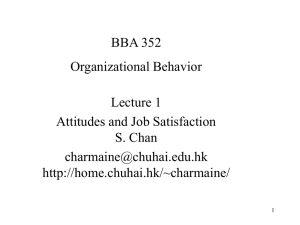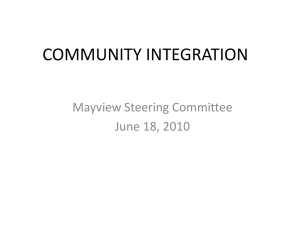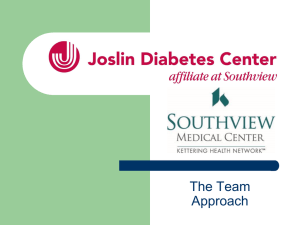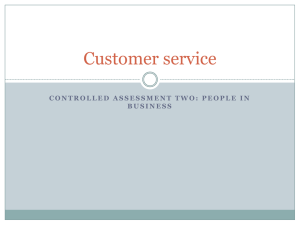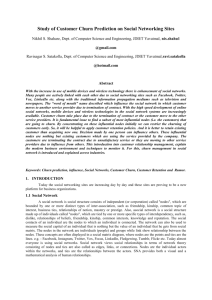John Importance of Customer Satisfaction - SATA
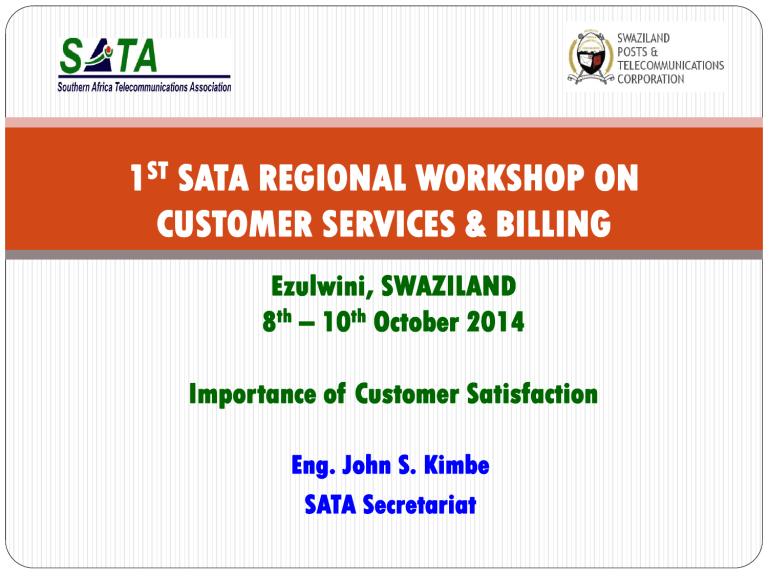
1
ST
SATA REGIONAL WORKSHOP ON
CUSTOMER SERVICES & BILLING
Ezulwini, SWAZILAND
8 th – 10 th October 2014
Importance of Customer Satisfaction
Eng. John S. Kimbe
SATA Secretariat
1. Customer Satisfaction
Customer satisfaction is a marketing term that measures how products or services supplied by a company meet or surpass a customer’s expectation.
Customer satisfaction is important because it provides marketers and business owners with a measure that they can use to manage and improve their businesses.
It’s a leading indicator of consumer repurchase intentions and loyalty.
2. A Point of Differentiation
Customer satisfaction is the best indicator of how likely a customer will make a purchase in the future .
In a competitive marketplace where businesses compete for customers; customer satisfaction is seen as a key differentiator .
Businesses who succeed in these cut-throat environments are the ones that make customer satisfaction a key element of their business strategy.
3. CS Reduces Customer Churn
A Global Customer Satisfaction Report (2008) by M/s
Accenture found that price is not the main reason for customer churn; it is actually due to the overall poor quality of customer service .
Customer satisfaction is the metric you can use to reduce customer churn.
By measuring and tracking customer satisfaction you can put new processes in place to increase the overall quality of your customer service.
A satisfied customer makes your PAY DAY happen.
4. CS Increases Customer Lifetime Value
A study by M/s InfoQuest found that a ‘ totally satisfied customer ’ contributes 2.6 times more revenue than a
‘ somewhat satisfied customer ’. Furthermore, a ‘ totally satisfied customer ’ contributes 14 times more revenue than a
‘ somewhat dissatisfied customer ’.
Satisfaction plays a significant role in how much revenue a customer generates for your business.
Successful businesses understand the importance of customer lifetime value (CLV).
5. CS Reduces Negative Word of Mouth
McKinsey (another researcher) found that an unhappy customer tells between 9-15 people about his/her experience . In fact, 13% of unhappy customers tell over 20 people about their experience.
That’s a lot of negative word of mouth.
It’s one thing to lose customers because they were unhappy. It’s another thing completely to lose 20 customers because of some bad word of mouth .
To eliminate bad word of mouth you need to measure customer satisfaction on an ongoing basis . Tracking changes in satisfaction will help you identify if customers are actually happy with your product or service.
6. Customer Retention Cheaper than
Acquisition of New Customers
It costs six to seven times more to acquire new customers than it does to retain existing customers.
Customers cost a lot of money to acquire . You and your marketing team spend thousands of dollars getting the attention of prospects, nurturing them into leads and closing them into sales.
Why is it that you then spend little or no money on customer retention ?
Imagine if you allocated one sixth (17%) of your marketing budget towards customer retention .
7. Customer Retention Strategies
Here are some customer retention strategies to get you thinking: o Use blogs to educate customers o Use email to send special promotions o Use customer satisfaction surveys to listen o Delight customers by offering personalized experiences
Measure satisfaction to see how happy your customers really are.
8. Take Home
What are you doing to measure customer satisfaction and identify unhappy customers?
Customer satisfaction plays an important role within your business.
Not only is it the leading indicator to measure customer loyalty, identify unhappy customers, reduce churn and increase revenue;
But is also a key point of differentiation that helps you to attract new customers in competitive business environments.

